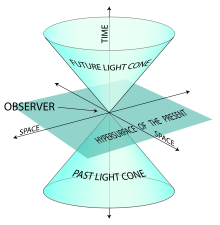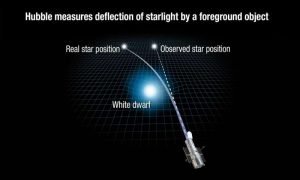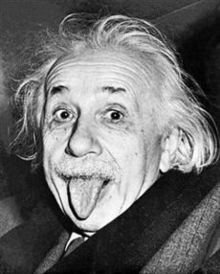Einstein’s contribution to the understanding of physical reality is more than any other scientist in the entire history. His special and general theories of relativity are still the most satisfactory models of the universe.

Albert Einstein was born on March 14, 1879 in Ulm, Württemberg, Germany. Around 1886 Einstein began his schooling in Munich. He studied mathematics starting from 1891. In 1895 Einstein failed in an examination to study for a diploma as an electrical engineer at an institute in Zurich. Einstein renounced German citizenship in 1896 and stateless for years until Swiss citizenship was granted to him in 1901.
In an essay, Einstein wrote about his passion for mathematics and physics: “If I were to have the good fortune to pass my examinations, I would go to Zurich. I would stay there for four years in order to study mathematics and physics.
I imagine myself becoming a teacher in those branches of the natural sciences, choosing the theoretical part of them.” Here is the major reason which lead him to this plan. It was his disposition for abstract and mathematical thought. Einstein succeeded with his plan by graduating as a teacher of mathematics and physics in 1900.

Einstein got a doctorate from the University of Zurich in 1905 for his work on “A New Determination of Molecular Dimensions”. In one of his accomplishments in 1905, Einstein examined and explained the photoelectric effect using the quantum phenomenon of electromagnetic energy, discovered by Max Planck. According to this phenomenon, the electromagnetic energy is emitted from atoms or radiating objects in discrete amounts only.
In the same year in 1905, Einstein paper proposed special theory of relativity. According to the special theory of relativity: (i) The laws of physics are the same in all inertial frames of reference, and (ii) the speed of light is a universal constant, independent of the relative motion of the source.
Minkowski added a formalism to the special theory of relativity by introducing four dimensional space (three dimensional space and one dimensional time). A simplified graphical picture of Minkowski space is shown below.

Einstein also did a landmark work related to statistical mechanics in 1905. Later on, Einstein extended his special theory of relativity to phenomena involving acceleration. He proposed the principle of equivalence in 1907, according to which gravitational mass is identical to the inertial mass.
In 1908 Einstein became a lecturer at the University of Bern. In the next year, he became professor of physics at the University of Zurich. He was appointed a full professor at the Karl-Ferdinand University in Prague in 1911.
In 1912, Einstein started his landmark research leading to his theory of general relativity which describes the force of gravity at the scale of speed of light which is 299 792 458 meter per second. At the core of theory of general relativity are Einstein’s equations. These equations are the relationships between the geometry of a four-dimensional Riemannian manifold of space-time and the energy–momentum contained in it.
According to general relativity, the observed gravitational effect between masses results from their warping of space-time. The general theory of relativity has been verified through measurement of deflection of light by a foreground massive object (as clear from a picture below).

Einstein was awarded a Nobel Prize in Physics in 1921 for his discovery of the law of the photoelectric effect and his other services to several fields of theoretical physics. Einstein received this prize one year later in 1922. Einstein died on April 18, 1955 at Princeton Medical Center at Plainsboro, New Jersey, United States, due to enlargement of the abdominal aorta. We end this article with his most celebrated quote: “Imagination is more important than knowledge”.

Declaration: The information presented in this article is taken from various electronic and in-print sources and presented here in a coherent manner.
Author Email: rana@alumni.nus.edu.sg